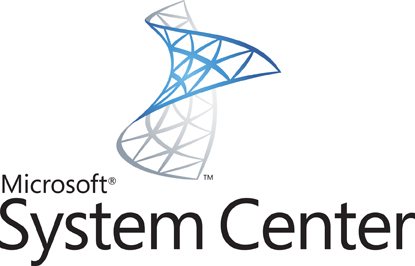System Center 2012 Licensing Changes: Everything You Need To Know
 This article has been contributed by Don Retallack, Analyst at Directions on Microsoft. Don analyzes and writes about Microsoft’s systems management and security offerings, including System Center and Forefront products.
This article has been contributed by Don Retallack, Analyst at Directions on Microsoft. Don analyzes and writes about Microsoft’s systems management and security offerings, including System Center and Forefront products.
In Jan. 2012, Microsoft announced major changes to the way it will license System Center systems management products.
The changes make licensing simpler and more consistent but eliminate individual product licenses, requiring customers to buy a suite instead.
Although the company offers attractive transition options, pricing changes require customers to quickly evaluate purchasing options, and customers who want to use only one System Center product will find it substantially more expensive to do so.
Only Managed Endpoints Need to Be Licensed
The System Center product line supports computer configuration, monitoring, virtualization, backup, software deployment and installation, and other administrative tasks.
The System Center product line supports computer and network configuration, monitoring, analysis, and other administrative tasks. For 2012, System Center products will be licensed only as bundles and will not be available separately. The bundles include eight previously separate System Center components:
- App Controller (previously code-named Concero)
- Configuration Manager
- Data Protection Manager
- Endpoint Protection (previously Forefront Endpoint Protection but will adopt the System Center branding in 2012)
- Operations Manager
- Orchestrator (previously Opalis)
- Service Manager
- Virtual Machine Manager
Several other current or discontinued products also bear the System Center branding:
- Advisor (previously code-named Atlanta)
- Capacity Planner (discontinued)
- Essentials
- Mobile Device Manager (discontinued)
- Windows Intune (not formally part of System Center but with similar functions and previously referred to as System Center Online Desktop Manager
With System Center 2012, Microsoft has eliminated licenses for the individual components and instead will sell licenses for suites that include eight previously separate products.
As for previous versions, a Management License (ML) is required for each endpoint device being managed with System Center. However, unlike previous versions, System Center 2012 does not require licenses for the servers running the management server software itself—the right to run the management software on servers is included when a customer purchases endpoint MLs.
System Center management servers require SQL Server to store configuration and other information about managed devices. Licensing SQL Server could be done by buying System Center products with SQL Server technology license or by licensing SQL Server separately. With System Center 2012, no license is required for SQL Server—System Center 2012 gives customers the right (for free) to install and run SQL Server Standard edition instances to support System Center 2012 products. However, these instances may not be used for other workloads.
The changes make the licensing model simpler and make it easier for customers to manage compliance. However, there will not likely be any large cost savings since MLs constituted the majority of licensing costs. (Management server licenses were typically a small percentage of the overall costs.)
Licenses for Individual System Center Products Are Eliminated
Microsoft previously offered MLs for each individual product (Configuration Manager, Data Protection Manager, Operations Manager, Service Manager, and Virtual Machine Manager). Most products offered one type of Client ML and two types of Server MLs—one for managing “basic” workloads (Standard Server ML) and another for “advanced” workloads (Enterprise Server ML). Licenses could also be purchased in suites, with two management license suites for servers that combined Server MLs for five System Center products, and three suites for clients that offered various combinations of client MLs.
For the most part with System Center 2012, MLs for individual products will no longer be offered—customers will need to buy System Center licenses in a suite. To license use of System Center products to manage a server, customers must choose between two management server suites (System Center 2012 Standard or System Center 2012 Datacenter). All forms of individual Server MLs are eliminated, and with that, there is no longer any concept of distinguishing between types of server workloads.
For managing clients, collections of System Center 2012 client MLs continue to be offered in the System Center Client Management Suite and in the Enterprise Client Access License (CAL) Suite. The only individual Client ML still offered is for System Center 2012 Configuration Manager; all others are eliminated. The Configuration Manager Client ML has been expanded to license use of Virtual Machine Manager to manage the client. The Configuration Manager Client ML, along with an Endpoint Protection subscription for antimalware, continues to be part of the Core CAL Suite.
Although the new licensing model introduces simplification—there are fewer ML license types to choose from—customers who want only one System Center product will find it substantially more expensive. And even though Microsoft will provide generous license entitlements for customers with Software Assurance (SA) attached to individual product MLs, at some future point if SA is renewed, the annual SA fee will rise significantly.
Server Management Suites Undergo Significant Changes
System Center server MLs will continue to be offered in two suites. However, the suites will change the licensing model (including virtualization rights), the System Center products included, and suite naming and pricing.
Previously, System Center could be licensed through the Server Management Suite Enterprise (SMSE) or the Server Management Suite Datacenter (SMSD). Both licensed management of “advanced” workloads using Configuration Manager, Operations Manager, Data Protection Manager, Service Manager, Virtual Machine Manager, and Opalis (which will be renamed Orchestrator in the 2012 version). Both suites required SA with all license purchases.
The two suites differed in their licensing models and in the number of Operating System Environments (OSEs) each was allowed to manage. (An OSE is an installation of the OS, either on a physical computer or in a virtual machine [VM] running on the computer.) SMSE was licensed per server, and any number of processors was allowed per server. SMSE allowed for management of four virtual OSEs on a server, plus one more on the server if it was only used to host VMs. The SMSE license plus two years of SA cost US$1,569. (All prices in this article reflect the U.S. Open NL price with two years of SA.) SMSD was licensed per processor with a minimum of two processers per physical server. SMSD allowed for management of an unlimited number of virtual OSEs and cost US$1,310 for each license and two years of SA (or US$2,620 for the minimum two licenses).
For System Center 2012, there are still two suites: System Center 2012 Standard, which is most similar to SMSE, and System Center 2012 Datacenter, which is most similar to SMSD. Both suites license management of all server workloads and include two new technologies: Endpoint Protection antimalware that previously carried the Forefront brand, and App Controller, a self-service portal for Virtual Machine Manager, previously code-named Concero. Both require SA with all licenses.

Don Retallack, Directions on Microsoft
System Center 2012 Standard is licensed per server but each license covers only two processors. A one- or two-processor server requires one license; a four-processor server requires two licenses. Each license costs US$1,323 and allows for management of two OSEs. Hence, a one- or two-processor server running one or two virtual OSEs (1:1 ratio old/new licenses) gives a 16% decrease in cost compared to SMSE. However, a four-processor server running three VMs on a server for a total of four OSEs (1:2 ratio old/new licenses) carries a 69% increase in license cost.
System Center 2012 Datacenter uses the same per-processor licensing model as Standard—each license covers up to two processors—but the Datacenter edition allows an unlimited number of virtual OSEs (similar to the previous SMSD). The System Center 2012 Datacenter license costs US$3,615; this represents a 38% increase over the cost of two SMSD licenses.
The new suites provide licensing model consistency: licenses are per processor. The suites are also consistent with Enrollment for Core Infrastructure license offerings that include a version of Windows Server, a suite of System Center management licenses, and Endpoint Protection antimalware. Existing customers with active SA at the time System Center 2012 becomes available will get attractive transition terms for as long as three years.
Availability and Resources
Microsoft has announced that System Center 2012 will be available in the first half of 2012, but the company has not announced a specific date for general availability. However, it will probably appear in time to be highlighted at the Microsoft Management Summit in Apr. 2012. In the meantime, a release candidate of the entire System Center 2012 line became available in Jan. 2012.
- The System Center 2012 announcement is at www.microsoft.com/Presspass/press/2012/jan12/01-17MSPrivateCloudDayPR.mspx.
- The System Center home page is at www.microsoft.com/systemcenter.
This article has been contributed by Don Retallack, Analyst at Directions on Microsoft. Don analyzes and writes about Microsoft’s systems management and security offerings, including System Center and Forefront products. If you would like to guest post on this blog please contact us.
Can’t find what you’re looking for?
More from ITAM News & Analysis
-
Software Vendor Insights: What do the numbers tell us about the opportunities for ITAM negotiations?
What software vendor insights can be gained from the latest financial results from Amazon, Google, Broadcom, Salesforce, IBM and SAP? An important part of ITAM is paying close attention to the health of the companies we ... -
Flexera is first SAM tool vendor verified for Oracle E-Business Suite applications
Flexera has announced that it has been verified as the first software asset management (SAM) tool vendor for Oracle E-Business Suite applications. Almost anyone with an Oracle estate will be familiar with the company’s License Management ... -
ITAMantics - March 2024
Welcome to the March 2024 edition of ITAMantics, where George, Rich and Ryan discuss the month’s ITAM news. Up for discussion this month are. Listen to the full ITAMantics podcast above or queue it up from ...